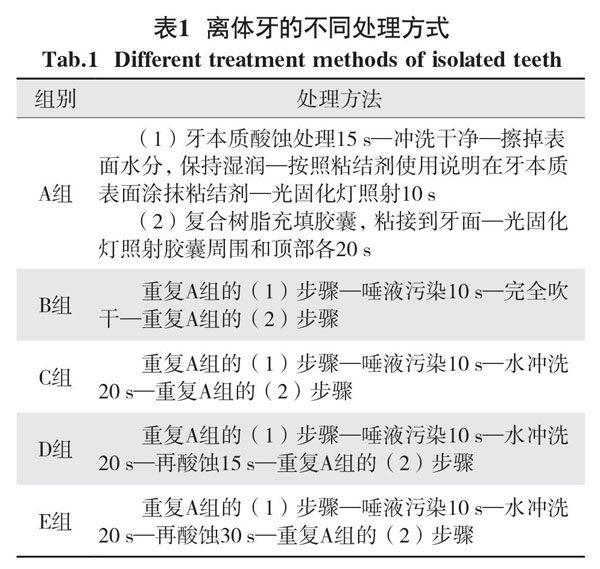乳牙修复处理方式与粘结剂光固化后 唾液污染乳牙牙本质粘接强度影响分析


打开文本图片集
摘 要:研究处理方式和通用粘接剂光固化后唾液污染乳牙牙本质粘接强度关系。选择符合要求的80颗乳牙作为实验样本,平均将其分为A、B、C、D、E组,A组为对照组,B组完全吹干的方式,C组水冲洗的方式,D组冲洗和再酸蚀15 s的方式,E组水冲洗和再酸蚀30 s的方式。对试样进行微拉伸强度测试和激光扫描共聚焦显微镜观察,结果表明:微拉伸强度各组从大到小依次为:A、D、E、C、B组,采用完全吹干的处理方式不利于唾液污染牙本质的粘接强度,B组和其他组间差异显著(P
关键词:处理方式;唾液污染;粘接强度
中图分类号:R783.1 文献标识码:A 文章编号:1001-5922(2022)05-0044-05
Treatment methods of primary teeth restoration and adhesive after light curing effect of saliva contamination on dentin bonding strength of deciduous teeth
Abstract: This paper is to study the relationship between the treatment method and the bonding strength of saliva contaminated deciduous dentin after light curing of the universal adhesive. Choose 80 deciduous teeth that meet the requirements as the experimental samples, and divide them into groups A, B, C, D, and E on average. Group A is used as the control group, and group B is completely blow-dried. Group C uses water washing, group D uses water washing and re-etching for 15 seconds, and group E uses water washing and re-etching for 30 seconds. Through the micro-tensile strength test and laser scanning confocal microscope observation of the sample, the following conclusions are obtained: the micro-tensile strength is sorted as group A>D>E> C>B, compared with the other several treatments, the completely blow-dried treatment is not conducive to the adhesive strength of saliva contaminated dentin. The difference between group B and the other four groups is statistically significant (P
Key words: treatment method;saliva contamination;bonding strength
在牙齿修复中,由于粘接技术有助于提高牙齿美学修复效果,受到越来越多年轻患者的关注,并因其优异的应用价值逐渐取代了传统的机械固位技术[1]。(剩余6769字)